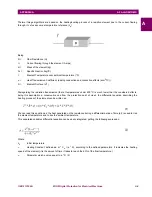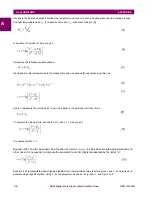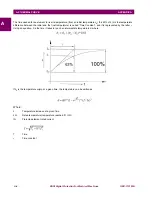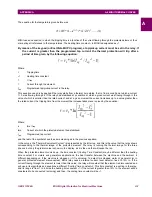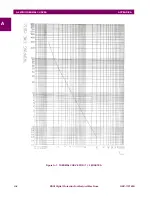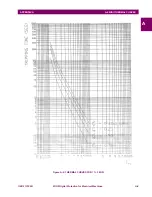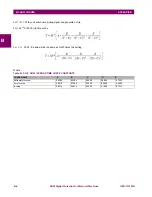
GEK-113188A
MIGII Digital Protection for Electrical Machines
A-1
APPENDIX A
A.1 INTRODUCTION
A
APPENDIX A THERMAL IMAGE UNITA.1INTRODUCTION
Protective relays are devices designed to detect and eliminate defects or faults in the Power System. The elimination of
the fault is carried out by the opening of the circuit breaker or breakers that supply power to the fault.
Faults in the Power System usually create very high current situations on lines, generators, transformers, etc. These high
currents are much greater than the rated currents for which these equipment were designed, introducing an additional
stress and possible direct damage, as a consequence of the thermal and dynamic effects of the high short-circuit
currents.
Due to this fact, the most common protective device is the overcurrent relay. Its operating principle is to detect if the
current in the system is under or above a set level, and depending on the current level, issue an instantaneous trip or a
fixed time delayed trip. There are overcurrent relays that include a current versus time tripping characteristic curve, that
makes the relay to trip faster for high currents and following an inverse I vs. t equation, trip slower for lower fault currents.
Operating times range from tens of milliseconds to some seconds for slower operation curves.
However, for some applications, this type of protective relay has some limitations.
In the case of two transformers, operating in parallel, feeding a distribution bus bar, working both of them at 70% of rated
load: if an overcurrent relay is installed on each transformer, and due to any reason, one transformer is out of service, the
other one will work at 140% of rated load.
Under these circumstances, the relay on the transformer that is in service will trip after a relatively short time, taking the
transformer out of service, and leaving the bus bar without any supply.
However, transformers are designed to withstand an overload condition like the described one for some minutes, without
any deterioration, allowing during this time to the substation operator to take the appropriate actions to restore the
situation and take the transformer back in service, before the other one gets over heated.
The Thermal Image protection is especially applicable to this situations, due to its operating principle. In general, it is a
standard backup protection for many protection schemes, for almost any device, motors, generators, cables, etc.
Summary of Contents for Multilin MIGII
Page 2: ......

















